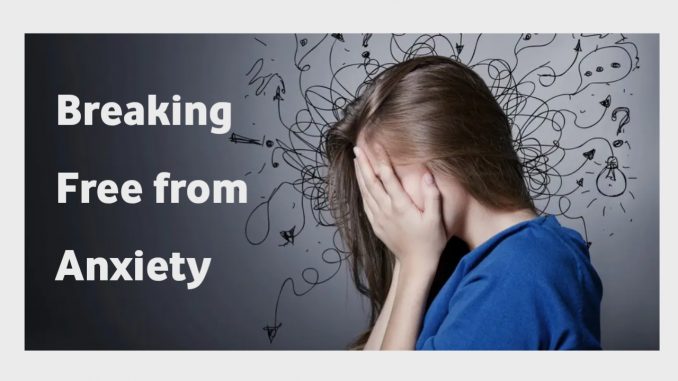
Anxiety is a natural and normal response to stress. It is a feeling of unease, apprehension, or worry that can range from mild to severe. Anxiety is a part of the body’s natural response to stress, and it can actually be helpful in certain situations, such as when it helps you to stay alert and focused.
There are many different types of anxiety disorders, each with its own set of symptoms and triggers. Some of the most common types of anxiety disorders include:
- Generalized Anxiety Disorder (GAD): GAD is characterized by persistent and excessive worry about a variety of things, such as work, health, finances, or relationships.
- Panic Disorder: Panic disorder involves sudden and intense feelings of fear, which can lead to a panic attack. Panic attacks can be very frightening and can cause physical symptoms such as rapid heartbeat, sweating, trembling, and difficulty breathing.
- Specific Phobias: Specific phobias involve excessive fear of a specific object or situation, such as spiders, heights, or flying.
Anxiety and Health care:
Anxiety can have many different causes, including biological, psychological, and environmental factors. Some of the most common causes of anxiety include:
- Genetics: Anxiety disorders tend to run in families, suggesting that there is a genetic component to the condition. Research has identified several genes that may be associated with anxiety disorders.
- Brain chemistry: Anxiety is associated with an imbalance of neurotransmitters in the brain, such as serotonin, dopamine, and norepinephrine.
- Environmental factors: Traumatic life events, chronic stress, and a lack of social support can all contribute to the development of anxiety.
Treatment for anxiety can include therapy, medication, relaxation techniques, exercise, sleep hygiene, social support, mindfulness, and self-care. Cognitive Behavioral Therapy (CBT) is a type of talk therapy that focuses on identifying and changing negative thoughts and behaviors.
Mindful Techniques:
Mindfulness techniques, such as meditation and mindfulness-based stress reduction (MBSR), can also be effective in reducing anxiety symptoms. Mindfulness involves paying attention to the present moment without judgment, which can help to reduce feelings of worry and anxiety about the future.
Self-care is also an important part of managing anxiety. This can include things like eating a healthy diet, getting regular exercise, practicing good sleep hygiene, and engaging in activities that you enjoy. It can also involve setting boundaries, saying no to things that cause stress, and taking time for yourself to relax and recharge.
For people with social anxiety disorder, social skills training can be helpful in learning how to interact with others in a more comfortable and confident way. This can involve learning specific communication skills, such as assertiveness and active listening.
Tips for Removing Anxiety
In addition to these treatment strategies, there are also some things that you can do on a daily basis to help manage anxiety symptoms. These can include:
- Practice deep breathing: Deep breathing exercises can help to reduce feelings of stress and anxiety. To do this, inhale deeply through your nose, hold for a few seconds, and then exhale slowly through your mouth.
- Stay present: Anxiety often involves worrying about the future or ruminating on the past. Try to stay present and focus on the present moment as much as possible.
- Use positive self-talk: Replace negative thoughts with positive ones. For example, instead of thinking “I can’t do this,” try thinking “I can do this, I just need to take it one step at a time.”
The symptoms of anxiety can vary depending on the type of anxiety disorder, but some common symptoms include excessive worry, fear, nervousness, restlessness, fatigue, difficulty concentrating, muscle tension, and sleep disturbances.
Anxiety is a normal and natural response to stress, but it becomes a problem when it is excessive or uncontrollable. Anxiety disorders are a group of mental health conditions that involve excessive worrying, fear, or nervousness.
Conclusion
In conclusion, anxiety is a natural and normal response to stress, but when it becomes excessive or uncontrollable, it can interfere with daily activities, relationships, and overall quality of life. There are many different types of anxiety disorders, each with its own set of symptoms and triggers. Treatment for anxiety can include therapy, medication,
In addition to formal treatment, there are also things you can do on a daily basis to help manage anxiety symptoms. These include practicing deep breathing, staying present, using positive self-talk, challenging negative thoughts, getting enough sleep, taking breaks, practicing self-care, and seeking support.
Leave a Reply